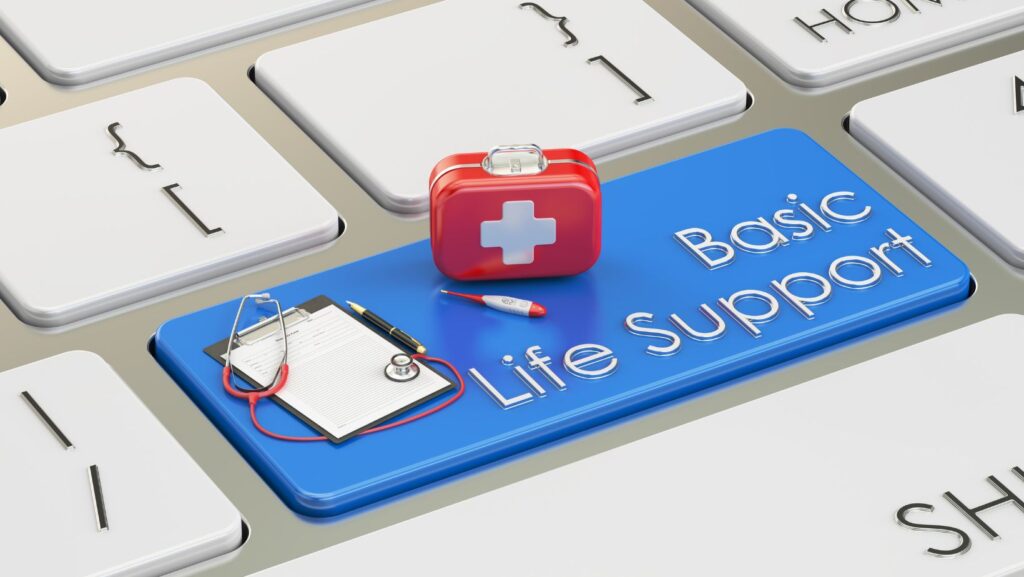Have you noticed how often Advanced Cardiovascular Life Support (ACLS) certification comes up in healthcare? At Clarkson College, more than 4,650 people completed life support training in a single year. That’s almost 20 times higher than the number of health science bachelor’s graduates.
The gap speaks volumes. It shows that ACLS is no longer just a bonus skill; it has become a universal passport in hands-on care. In many cases, it carries more immediate value than the degree itself.
For new providers, taking the first ACLS course is a big milestone. For experienced staff, keeping credentials current is just as critical. But here’s the catch: the cost isn’t the same. Initial training and recertification come with very different price tags. Knowing the difference can help you save money and plan ahead. Keep reading to learn more about the ACLS course cost.
Understanding ACLS Course Cost
ACLS training is an investment in your career, and the cost varies depending on the provider and whether it’s your initial certification or a renewal. In most cases, initial certification runs between $150 and $300. Renewal is usually lower, often $100 to $200.
Different providers charge different fees. Hospitals may bundle the course with other training. Universities can be higher since they add classroom time and resources. Private centers and online programs tend to be more flexible in price.
ACLS has become a popular credential for clinical professionals. It helps them to qualify for jobs and advance their careers. Renewal courses are shorter, which is why they usually cost less. Some providers, however, maintain the same price like ACLSNow.com. The reason is simple: recertification covers all new updates and reviews the full skill set, not just the basics. That way, no step in care is missed.
Knowing these price ranges gives you a baseline and shows why comparing ACLS course costs upfront makes sense before signing up.
Why Initial ACLS Certification Costs More
First-time ACLS students go through the full training. That means longer hours, more material, and step-by-step instruction. You’re not just reviewing what you already know, you’re learning everything from the ground up.
Initial courses often include full chapters on stroke care, airway management, and the ACLS algorithm. You also receive continuing education credits, course materials, and a skills review. All of this takes time and resources, which is why the cost is higher.
Think of it as an investment. The first certification builds your foundation. Without it, renewal would have nothing to stand on.
Why ACLS Recertification Is Usually Cheaper
Recertification is designed for healthcare professionals who already have the foundational knowledge. The goal is to refresh, not to reteach everything from scratch. Because of that, the course is shorter and more focused.
Most online renewal programs cut down on classroom time. They highlight updates, review the algorithm, and test your existing skills. You don’t need the same level of instruction or practice as a first-time student.

That’s why recertification often costs less. You’re paying for a streamlined course that keeps you current without repeating the full training. Some providers still keep the price the same, but the value is clear: you save time, and you walk away with the same two-year credential.
How to Decide Between Initial Certification and Recertification
The course you need depends on your status. If your ACLS card has expired or you’ve never taken the class, you’ll need the initial certification. It costs more, but it covers every skill in detail. This option gives you the foundation you need to work in critical care settings.
If you already hold a current card, you only need recertification. It’s faster, usually cheaper, and designed to refresh what you know. As long as you renew on time, you avoid paying the higher initial fee again.
The takeaway is simple: stay current, and you save both money and time. Letting your certification lapse means you’ll need to retake the full initial course.
Take the Next Step in Your ACLS Training
No ACLS means fewer opportunities in healthcare. Hospitals and clinics look for providers who are certified, and without it, your options shrink quickly. It doesn’t matter if you’re taking ACLS for the first time or renewing your card; you need to stay current if you want to keep advancing in your career.
Never let your certification expire. Check the ACLS course cost, choose the option that works for you, and complete it on time. The sooner you act, the sooner you’ll keep your skills sharp and your credentials ready. Patients are counting on you to be prepared.

